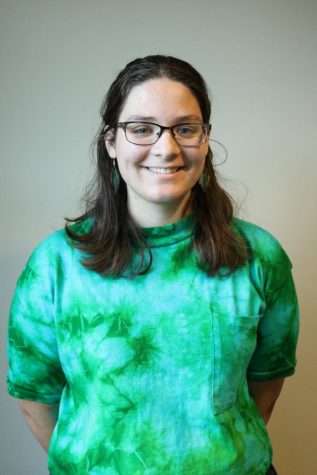Orientation: a staple of the college experience. Often dismissed as days of pointless sessions, it has the potential to be an introduction to life as a Guilford College student.
However, does Guilford’s orientation accurately represent the College?
As a transfer student, I attended a modified version of orientation. My sessions included primarily the sessions traditionally done every year, as well as a few introductions to Guilford.
Some sessions were informational, while others were more interactive, including tours and quizzes.
However, transfer students did not have as many sessions as the first-year students, who had sessions throughout the day. There were not many breaks for students seeking to follow the schedule, which led to some questions about whether all of the programming was necessary.
Annika Norris, a first-year, explained why she did not attend many sessions.
“Based off the descriptions, I felt like it would be stuff I already knew,” said Norris.
Orientation sessions included College 101, Alcohol and Drug Awareness, Sustainability Education, Bystander Training and more, which were all meant to give basic education on the topics.
Sophia Lewis-Nash, also a first-year, felt the Bystander Training did not teach her how to be an active bystander but rather gave her the information about who to contact if something went wrong.
Logistically, orientation was well-planned and had solid goals.
“We wanted to make sure first-year students felt like they were a part of the Guilford community in a very short amount of time, so that when classes started, they felt like they had been here already,” said Assistant Director for the Office of Student Leadership & Engagement Tim Johnson.
To an extent, this worked. Norris said orientation helped her make friends.
Everything was there: informational sessions, the popular street fair for students to mingle and enjoy themselves, a concert hosted by a radio DJ from 102 Jamz and more. Johnson emphasized a focus on accessibility and compliance with the American Disabilities Act.
So why didn’t more students show up to orientation events?
Junior Jamie McCreary, one of the orientation team leaders, felt many students did not come because sessions were not mandatory.
“We have to figure out how to get everyone to come to the events that are really important and not just the fun stuff,” said McCreary.
Some of the sessions were interactive. Quakerism 101 included both a quiz-based learning activity and a choice between two local tours. The Mirror Me diversity session included small groups focused on opening people’s eyes to their own limited experiences and helping them move forward.
Sophomore Grace Bostic was a peer leader for the pre-orientation Surf Camp. Bostic spoke on how before the trip, the leaders talked to the new students about Guilford’s core values and what they mean in practice.
“Since then I haven’t had another peer or leader walk me through and explicitly explain what Guilford hopes to stand for without all the fluff that comes with a guided tour or spiel,” Bostic said.
So how can orientation planners remove the fluff and sense of time wasted at orientation? There were surveys given out after events, so the student leaders next year will consider the opinions of students who attended.
But what of the sessions Lewis-Nash and Norris discussed, which were primarily information-based and not practically helpful? Orientation needs less focus on filling the day and more on giving efficient, interesting sessions.
This could be done by finding out what students would like to gain from orientation. It could help to do a pre-orientation survey to see what students would like to gain from orientation, taking their thoughts into consideration in planning.
Sessions with voluntary student interaction and less time sitting in information sessions would help demonstrate Guilford’s commitment to conversation, not lectures. Students should be active and participatory, not sedentary and passive.
For example, the sustainability workshop, which was a presentation about sustainability efforts on campus, could have been combined with the farm tour, which was a more active program.
The final evening of orientation concluded with the traditional Passing of the Light ceremony led by Campus Ministry Coordinator Frank Massey. Students each received a candle, Massey lit the first one and students lit one another’s candles until everyone had a flame. This unique program welcomed new students into Guilford and served to unite the first-year class.
Johnson summed up the message of Passing of the Light and Guilford as a whole.
“What I’ve heard from students is: we’re weird here,” said Johnson. “We’re different, but everyone kind of fits in,” he said.
All of orientation should reflect our values and practices not only through the words spoken, but also by these first impressions of Guilford.






